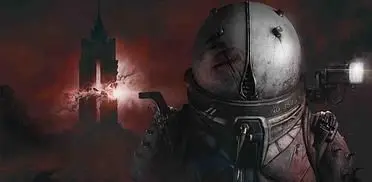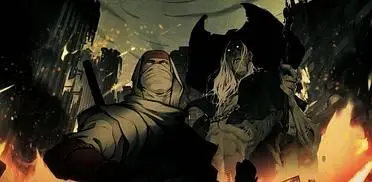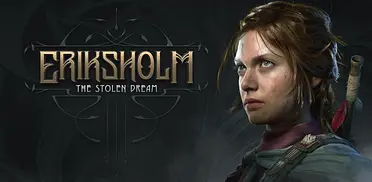EA, in their ever going quest to give out mixed signals about their business ethics, has now stepped up to offer a westernized alternative to these Japanese hallmarks. Developed by one of EA’s in-house studios using a brand new IP, BattleForge is set in a fantasy realm where you, as a ‘Skylord’, help guide the fate of the world around you by using cards to summon forces onto the screen. You gain more cards by winning matches, or buying ‘booster’ packs and other stronger cards through micro-transactions and a point system, and like any good card game, you can customize and create your own decks to find that winning formula, buy/sell/trade cards, and get endless repeats you don’t need. The game is not due out till the end of March, however a public beta has been going on for a while now, and here are our impressions.
 |
 |
|
The main game is split into several parts – there is a ‘single-player’ mode in which the player goes from scenario to scenario following a seemingly well conceived plot, fighting matches on more story-objective based maps in order to gain some experience for when you fight real opponents. There are also scenarios where several players have to team up in order to complete the level, which are clearly indicated on the game’s world map screen. These could prove to be tremendous fun, as EA are promising 12 player epic co-op matches. Whether you’ll be able to get 12 people together remains to be seen, but at least the content is there. The various scenarios are laid out on the world map, and by completing missions, you reveal another bit of the story which goes into your journal. On top of that, there are 3 different difficulty levels, which will hopefully prolong the single player elements of the game.
Naturally though, a game like this is about the PvP. Apart from the co-operative scenarios, a player can chose to visit either the duelling grounds or the battle grounds. There they can fight in a variety of different match types where two or more people put their decks against each other in contests of skill, strength, and whoever has the most money to buy cards with. The Sparring ground is where you can fight out practice matches, naturally, with the duelling grounds being the real deal. Both modes are separate from the scenarios, and can be accessed from the word go. There is a focus towards social interaction in this game, as BattleForge comes equipped with its own internal market place for buying and selling, and a fully integrated game-chat system.
 |
 |
|
The battle maps look and feel a little bit like Warcraft III, with similar graphics and models, albeit different universe. There are no ‘buildings’ per se in the game, apart from those that spawn NPC enemies, and so the player has to capture and control several Dawn of War-style control points, which generates the ‘power’ needed to summon units. A player must also capture Monuments, which can be set to one of the four elements. These Monuments allow the player to summon more powerful beasts, like the power cards from the Pokémon TCG. (Don’t deny it; you remember exactly how that worked.) These controls points will quickly become scenes of viscous fighting between the two sides (even during NPC matches), and so it is important to keep these structures defended.
As you may have gathered, the cards are split into four elements or ‘powers’: Fire, Frost, Nature, Shadow. Each has their own various traits, strengths and weaknesses, for example Frost cards are more defensive, whilst Fire cards are aggressive. However there is no rock-paper-scissor mechanic here. Instead, one must try to combine different card types together so that one power’s weaknesses are covered by another power’s strength. One also must be careful to not dilute the deck too much, as the powerful cards need specific monument combinations in order to be used, which limits variety.
The cards themselves are split into a number of categories – there are you basic unit cards, which range in size and power. There are defensive towers you can build, and stronger variants there off, and there’s spells which can assist you in battle either offensively or defensively. Pretty self explanatory, although during testing, the pace of the battles usually meant you were more focused on keeping a steady supply of troops going as opposed to picking out a spell to use – might be an issue to keep an eye on, otherwise there’s a danger they could just fall to the wayside. The towers were also only really useful in certain limited situations, so it remains to be seen whether they are worth it or not. The developers will also have to make sure the cards are balanced out well, as there’s always that danger that some smarty-pants will find a winning combination that no one can beat or can only beat a certain way, thus spoiling game play.
 |
 |
|
Apart from that, there appears to be a solid infrastructure to the game. The UI is pretty straight forward, and apart from the initial tutorial match, there are helpful hints for all sections of the game. It’ a shame you can’t pause, even during single-player NPC matches, but that’s to be expected.
All in all, there are worse games out there. It may not be as slick as Yu-Gi-Oh, or as annoyingly cute as Pokémon, but they’ve made an effort. So long as EA keeps things so that not having the funds/inclination to use the micro-transactions means you aren’t too severely handicapped, and so can’t compete, then this may well turn into a unique RTS game. Saying that, our inner instincts will probably force us to blow our pay checks on as many boosters as we can get our digital fingers on. Either way, unless the game mechanics get really, really bad between now and release, this is probably going to make EA a fair bit of money. Whether that’s a good thing or not, we leave up to you.


.webp)

